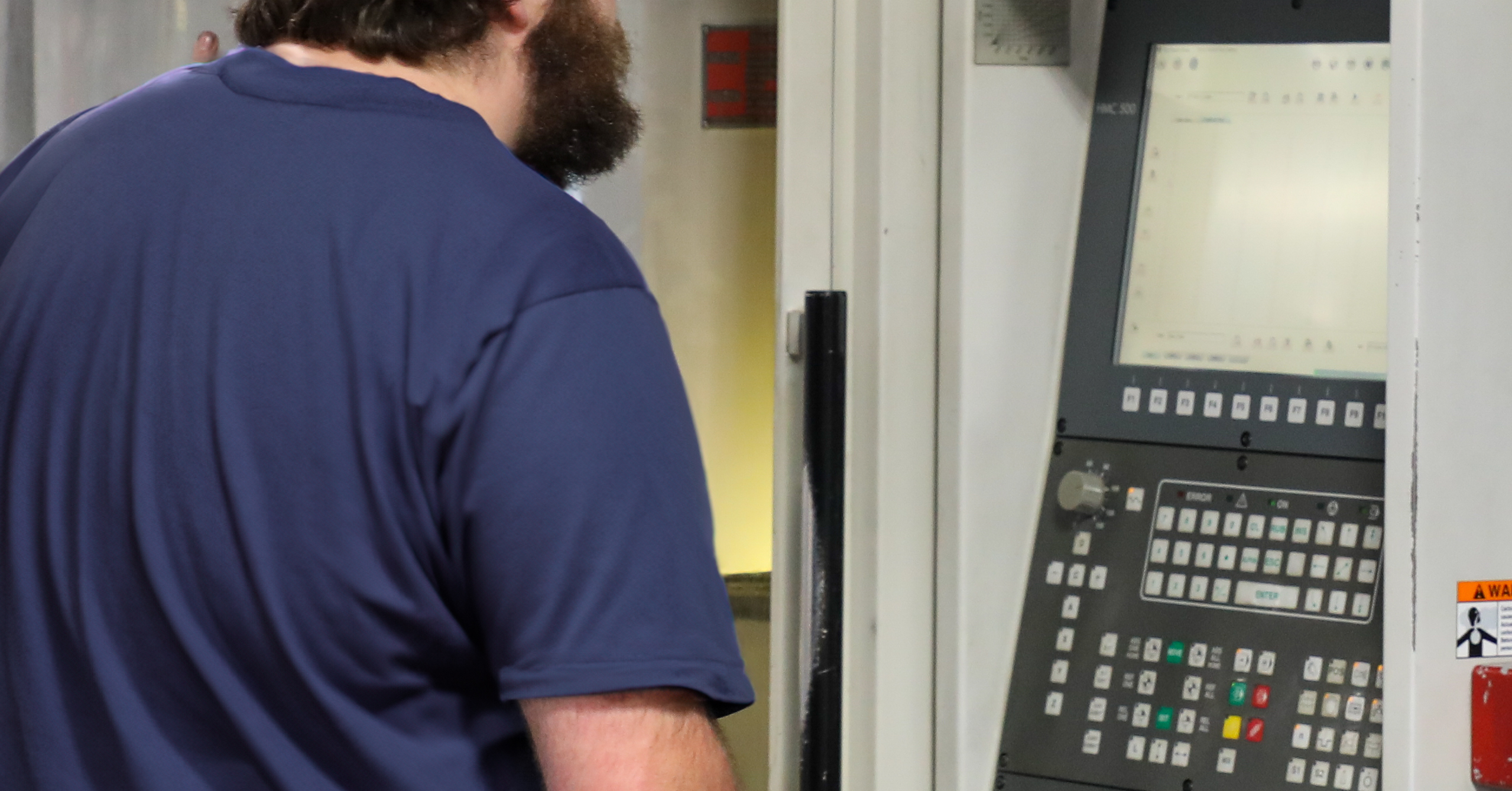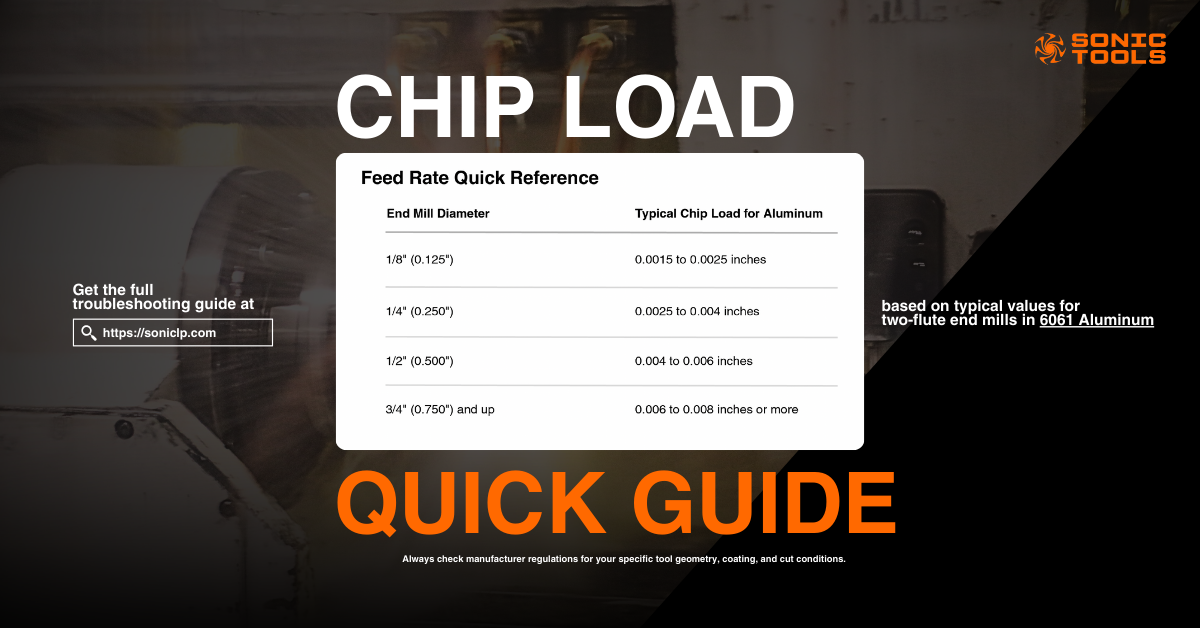5 Speeds and Feeds Mistakes That Could be Ruining Your Tools
Posted by Cam Glass on 04.04.25
Think your setup is solid? You might want to think again, especially if you're cutting aluminum.
Every little detail that goes into your cutting parameters can significantly affect tool life, surface finish, and overall aluminum milling efficiency. Unfortunately, speeds and feeds are still one of the most commonly overlooked areas in CNC operations, especially when time is short or assumptions are made across different materials.
If you're working with aluminum and experiencing tool wear, inconsistent finishes, or unnecessary downtime, there's a good chance one of these five issues is to blame.
1. Reusing Parameters Meant for Other Materials on Aluminum Jobs
Aluminum is the black sheep of the metal family and it behaves very differently than most metals during machining. It's softer, more prone to built-up edge (BUE), and requires higher spindle speeds and faster feed rates to cut efficiently.
Applying parameters optimized for materials like steel, titanium, or even general-purpose alloys can result in:
-Heat buildup
-Chip adhesion on cutting edges
-Premature tool wear
-Poor surface finishes
If you want to extend tool life, your parameters need to match the material.
Recommendation: Always adjust speeds and feeds based on the material. Optimize for higher RPMs and increased chip load to reduce heat and improve chip evacuation for aluminum.

From this comparison above, you can see how aluminum tools can wear out over time. On the right, you'll see a case of built-up-edge (BUE) as a result of improper parameter settings. Whereas on the left, the tool demonstrates no visible wear.
2. Relying Too Heavily on CAM Software Defaults
While utilizing CAM software defaults can be a time-saver if your machine shop looks like the trading floor in Trading Places, it typically isn't tailored to your machine, tools, or material. Default speeds and feeds are conservative by design and rarely optimized for performance.
Over-reliance can result in:
-Excessive cycle times
-Rubbing instead of cutting
-Reduced efficiency and inconsistent finishes
Recommendation: Use CAM defaults as a starting point, not the finish line. Adjust feeds and speeds manually based on actual job requirements and material data.

3. Ignoring Tool Diameter When Calculating Chip Load
One of the most overlooked speeds and feeds mistakes we see would be the application of the same feed rate across tools of different diameters. A 1/8" end mill doesn't behave like a 1/2", and shouldn't be programmed like one.
Underfeeding or overfeeding small tools leads to:
-Rubbing and heat buildup
-Chipping or tool failure
-Poor finish and dimensional inaccuracy
Recommendation: Feed rate should always be calculated using:
Chip load per tooth × number of flutes × RPM.
Adjust for each tool diameter to avoid performance issues. Luckily, Sonic Tools provides the accurate speeds and feeds for each tool on our website. If you're ever unsure about the correct speeds and feeds for your tool, you can easily find it here.

Want to reduce wear by 30% on your next aluminum job?
>Click this link to download our Feed Rate Troubleshooting Guide
4. Using Incompatible Tool Coatings
Certain coatings, such as TiN, can work well for ferrous metals, but they're not ideal for aluminum. They increase friction and can cause aluminum to weld to the cutting edge.
Instead, opt for:
-Polished, uncoated flutes
-TiB2 or TiAlSiN coatings, which are optimized for non-ferrous materials
Recommendation: Tool coating plays a major role in chip evacuation, surface finish, and overall performance. For aluminum, reduce adhesion with the correct geometry and surface treatment.
5. Skipping Post-Run Tool Inspections
Skipping tool inspections between runs? You're not just missing signs of wear, you're missing insights that could fuel better decisions and support long-term tool wear prevention.
Early signs of wear include:
-Cutting edge rounding
-Built-up edge (BUE)
-Chipping or discoloration
-Finish quality degradation
Recommendation: Create a post-run checklist. Log wear patterns over time to identify trends and refine your cutting parameters for future jobs.
Frequently Asked Questions
What happens if feed rate is too high?
Excessive feed rate can cause chatter, tool deflection, breakage, and poor finish quality. In aluminum, it also increases heat and can reduce tool life.
What's the ideal chip load for aluminum?
It varies by tool diameter, material grade, and operation type. Aluminum generally allows for a higher chip load than steel. Check the tooling manufacturer's specs and adjust based on cut conditions.
Why does my tool wear out so fast in aluminum?
The wrong speeds and feeds, incompatible coatings, or insufficient chip evacuation are common causes. Improper cutting parameters accelerate wear.
Should I use coated or uncoated end mills for aluminum?
Use polished flutes with aluminum-friendly coatings like ZrN or DLC. Avoid TiN or multipurpose coatings that increase friction in non-ferrous applications.
Why Sonic Tools LP?
At Sonic Tools LP, we understand that performance issues in aluminum milling don't just cost time. They cost trust, repeat work, and your shop's profitability. We engineer American manufactured tools designed to support precision, durability, and predictable performance across every job.
We develop our tools for machinists, programmers, and tooling managers who expect more from their equipment and suppliers. From aluminum-specific geometries to advanced coatings, our products are tested in real applications and built for accurate results.
Remember, with better tools, come better results.
Related Resources & Tools
Looking to go deeper? Explore these related tools and guides:
>240 Series High Speed Aluminum Machining Tools
>Feed Rate Troubleshooting Guide
>End Mill Coatings Comparisons
Ready to stop guessing your speeds and feeds?
Download the Feed Rate Troubleshooting Guide to Further Hone your Quality of Cut.
Check it out here! → https://tr.ee/FeedRateTroubleshootingGuideAluminum
